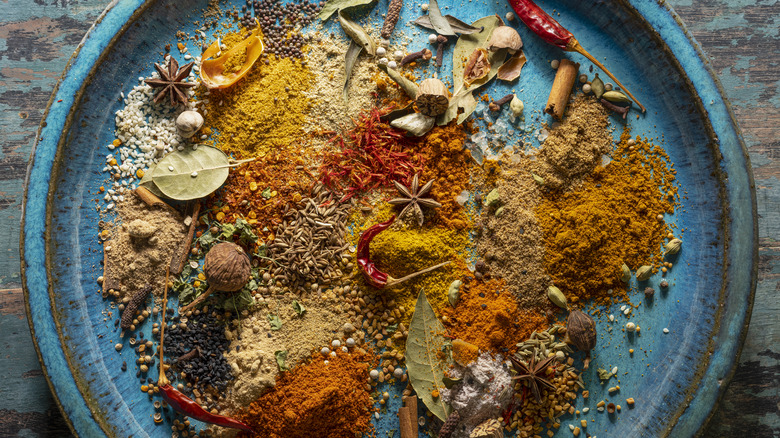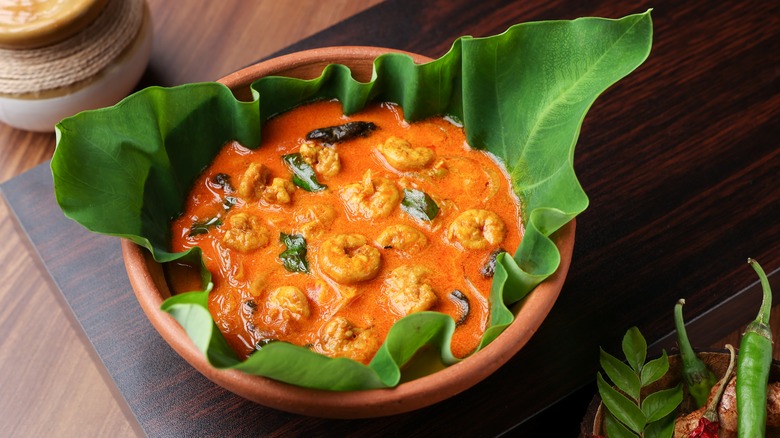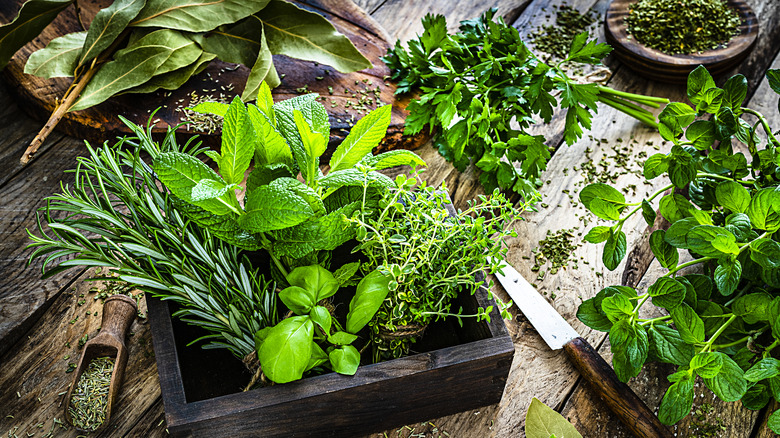The Definitive Order Of Operations For Seasoning Homemade Curry
Making curry at home has become increasingly easier as the rich, earthy, and often-spicy sauce has entered the mainstream of daily devotion. Once relegated to Indian and other South Asian restaurants, curry-based meals are now a favorite for at-home eating — and cooking. The long list of spices and seasonings can seem intimidating at first, but they'll become intuitive once you understand the order in which to add them.
Each seasoning component injects a new layer into the ever-evolving creation of homemade curry, which is basically just a sauce or gravy. But it's seldom used as a side dish or accompaniment, rather being the very important base of the main meal, typically accompanied by meat, fish, vegetables, tofu, or other ingredients per preference. Without the complexity of perfectly balanced seasonings, the entire dish goes awry.
The trick to mastering the order of operations is to separate them by flavor balance and composition, which generally comes down to dry versus fresh spices, whole or powdered, and varying levels of heat tolerance. Though it's subjective based on the type of seasoning, a rudimentary sequence order tends to be dry, whole spices first, followed by powdered ones, and finishing with fresh herbs and hot chili peppers if desired.
Types of spices for sequencing
With evidence of spiced sauces dating back centuries in India, it stands to reason that recipes for today's curry sauce can vary wildly from one home to another. But some common spices prevail in most versions, and consensus on the cooking sequence is at least similar in modern recipes. Keep in mind that you'll be adding other ingredients as you build your curry gravy — this is just the order for the seasonings as you progress.
Whole dry spices such as sticks, seeds, and dried leaves, which can withstand the initial hot oil in your pan, go first. Depending on the recipe, these can include cardamom, cumin, cinnamon sticks, curry leaves, whole garam masala, fenugreek, nigella, and mustard seeds. Since they are not already crushed, the hot oil helps release the intense flavors of these seasonings.
Next up are the powdered herbs and spices. A jumpstart step here is to employ a pre-blended dry, powdered spice mixture known as "curry powder." It typically includes individual spices that you'd add separately in a from-scratch recipe. McCormick, one of many food sources offering curry powder in convenient small bottles, mixes powdered versions of turmeric, ground coriander, nutmeg, clove, black and red peppers, cumin, celery seed, nutmeg, onion, and fenugreek.
However, many chefs instead add their own chosen spices. In addition to the ones above, this is when you could add powdered chilies, garlic, salt, mustard, fennel, ginger, paprika, or ground cayenne peppers. In the final step, you'll be tossing in fresh herbs.
Finish with freshness and heat
As your curry comes together, rich with spiced flavors and earthy undertones, you'll reach the end stages in which fresh herbs do their magic. These can be anything from fresh basil to bay leaves, dill, mint, fresh curry leaves, parsley, mint, methi, sage, and endless other options. It's your curry, so go with your instincts, flavor inclinations, or favorite curry recipes.
This is also a good time to toss in fresh chopped garlic cloves, onions, shallots, or tomatoes, or inject a light citrusy splash of lemon, orange, or lime juice. Just be sure not to overshadow all the other fragrant, woodsy earth offerings you've coaxed to perfection in your homemade curry sauce.
Some experienced curry chefs offer tips such as mixing water with the powdered spices as you go, to prevent them from burning. You may want to lightly toast the whole dry spices before adding them, to bring out the fragrance and flavors. For a nice finishing kick, lower or turn off the heat, and then drop in some spicy hot chili peppers. The pan's lingering heat will reduce the stinging chili bite while remaining firm for a contrasting texture.


